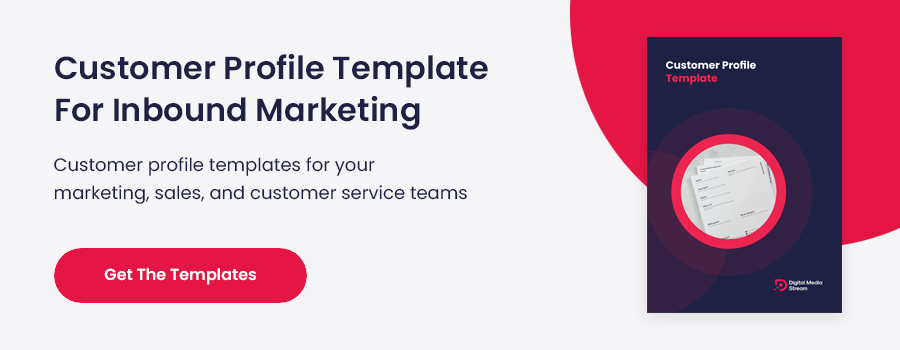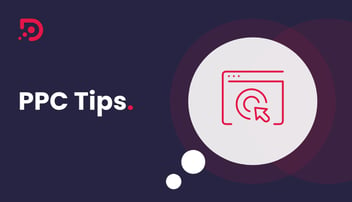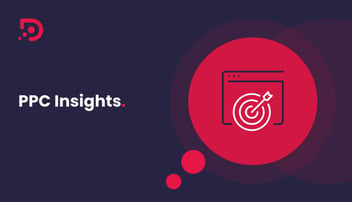This guide will teach you how to create a multi-channel B2B content marketing strategy from scratch. If you read to the end, you'll learn how to:
- Formulate online marketing objectives.
- Understand the different types of content that can be created to achieve your objectives.
- Choose which marketing channel(s) is right for your business.
- How to tailor your content and messaging for your target audience.
- Visualise what success looks like and how to get there.
Content Marketing: Key Terminology
We’ll start with some key terms:
- Marketing channel: A method of communication used to interact with potential customers.
- Multi-channel marketing: Using multiple channels to promote goods and services to potential customers, with the aim of convincing them to buy.
- B2B (Business To Business): Marketing whose potential customers are businesses and organisations, rather than consumers.
- Content: Anything used to communicate with your audience through a marketing channel - words, graphics, video, audio, etc.
So, a multi-channel B2B content strategy is a planned and coordinated strategy to promote your products and services to other businesses across a variety of channels. Content is used effectively and intelligently to create conversions, and specific objectives are established and analysed.
But what are the benefits?
A good B2B content marketing strategy gives consumers choices and allows them to engage via the channel(s) they enjoy using, meaning they will perceive your brand more favourably.
The rest of this guide will explore each aspect of a B2B content strategy in more detail. There’ll be a handy list of steps at the end for you to print and stick on the wall.
Setting Objectives For Success
Your content strategy objectives will be determined by what you’d like to achieve.
Objectives may be overarching: “achieve more conversions”, “increase engagement in a new demographic”, and “upsell to a segment of our existing consumers”.
Or they may be more granular: “achieve 15% open rate for our newsletter”, “achieve 4% conversions from our Facebook advertising campaign”, “achieve 10% increase in the number of qualified leads from digital”.
The objectives will determine which channels you use and which content you create.
The metrics you collect to analyse the effectiveness of your strategy will vary. We will go through this later after your channels and content have been decided.
Establishing an Effective Marketing Mix
Using multiple channels allows you to engage with more potential consumers, through the formats they choose. Understanding how the channels interact with each other prevents siloed thinking and allows for better analysis..
You should decide which combination of owned, earned and paid media activity to use.
- Owned media is your brand, its assets, and the communications channels it controls (website, newsletter, social media and so on).
- Earned media activity refers to engagement that has not been paid for, in the form of mentions, follows or coverage. Effective earned media attracts prospects who are already qualified and receptive to making a purchase.
- Paid media refers to channels where you pay to compete for position and visibility. Bigger spending means your content will reach more potential consumers.
Each has merits and all can work in harmony. A strong, consistent brand that creates high-quality content will attract engagement via mentions, follows and coverage, and may choose to supplement this with paid promotion to increase its reach at all stages of the marketing funnel.

Inbound vs Outbound
Once your preferred marketing method(s) has been chosen, you should then decide which combination of inbound and outbound channels to use.
- Inbound marketing refers to attracting consumers through content published on one of your owned channels such as your blog, website, or social media profile.
- Outbound marketing refers to marketing efforts where the brand starts the conversation, whether through paid or earned efforts.
Which combination is right for you?
Finally, you should decide which combination of channels is most suitable, based on their individual merits. Here are the pros and cons of ten marketing channels to get you started. These vary in popularity and cover the full spectrum outlined above:
Owned, Inbound. Ubiquitous so your content is likely to be seen, however, consumers may be jaded with brand content.
Facebook adverts
Paid, Outbound. Adverts are highly targeted based on Facebook’s in-depth demographic data but again, people may be jaded.
Google Ads
Paid, Outbound. You pay for each click, and Google is taking more steps to make ads harder to differentiate from organic results.
Organic Google results
Earned, Inbound. The top spot is the dragon all SEOs are chasing, and leads to significantly higher click-throughs than other positions, but requires a lot of work.
Earned, Inbound. Thought pieces, whitepapers, eBooks and similar perform well on this channel, but the user base is lower than Facebook.
Email marketing
Owned, Outbound/ Inbound. If someone is on your mailing list, especially after GDPR, it is implied they are interested and engaged with your brand. Lots of brands use email marketing though so people may be jaded.
SMS & Whatsapp marketing
Paid, Outbound. Goes direct to someone’s phone.
Newspaper, television, and radio advertisements
Paid, Outbound. Will be seen by lots of people but is harder to attribute because it is offline.
E-Books
Owned, Inbound. As above, requires a large investment in design time as well
Whitepapers
Owned, Inbound. Demonstrates credibility and knowledge and works well for B2B audience, but requires a large investment of time.
And some other channels you might consider are Twitter, Instagram, YouTube, catalogues, networking, stores, stalls at events, and billboards. The list goes on. These are not given in any implied order. Invest time in deciding which channels best suit your brand, your strengths and your objectives.
Remember also that channels fall in and out of favour over time (remember QR codes?). It’s also something of an arms race; people skip through TV ads now so they must be effective when viewed on fast forward; people install AdBlock and become jaded with brand-managed Facebook channels.
You should be willing to adapt your marketing efforts accordingly to these factors or you risk funnelling money into an ineffective channel.
Creating Strong and Effective Content
You should create different types of content for different channels, based on your objectives and an understanding of your target audience and their behaviour.
Strong content will create value for consumers and will attract genuine engagement. It will demonstrate your credibility and trust, as well as enhance your reputation. Certain decisions are made for you; whitepapers are not compatible with Twitter’s microblog format, for example.
Other decisions are up to you. Should you present the results of your research as a whitepaper? Or an infographic? Or a series of videos where your MD talks through the results?
The Importance of Persona Creation
Creating a persona is your first step in answering these questions.
Meet Karen, who we’ll be using as an example.
As personas go, Karen is quite basic. We created her by typing “Prince Harry” into the free version of the YouGov Profiles tool, which then combined the data of 22,895 people who said they liked our newlywed prince.
You can see that even basic information paints a picture. Karen is probably more likely to flick through The Sunday Times than browse Reddit. She will likely be less tech-savvy than younger users, meaning AdBlock won’t be installed on her computer.
These insights will advise your decision on which channels to use. A persona is also useful for consistent messaging; a vital component of an effective content strategy. The tone of voice should be consistent across all channels. You should create a persona, with these steps:
- Understand how people engage with your existing content.
- Have a good idea of the questions people are asking in your niche.
- Capture demographic information of customers and leads.
- Talk to your sales team for feedback on leads, and on people who are already receptive to your brand messaging.
- Talk to existing customers.
- Combine these insights into one or a few pretend people.
Choosing which type of content to create will be a lot easier if you have a persona in mind. So your next step should be to formulate content ideas relevant to your identified personas and audience.
Luckily, we have written a comprehensive guide to have and build on content ideas, in our 12 must-have (mostly) free content creation tools resource. This goes into more detail on every single one of the following tools and techniques:
- Initial idea generation with lists and mind maps.
- Broaden your initial ideas with Answer the Public.
- Align your ideas with real search queries with Google’s related searches.
- Analyse demographics with YouGov’s profile tool.
- Understand what your target audience talks about with Reddit.
- Get data-based suggestions on what to include with Google Drive’s research tool.
- Identify what influencers and big publications write about with Buzzsumo.
- Explore metrics to understand what type of ideas work well with Ahrefs and Google Analytics.
- Align your ideas even more closely with real search queries with Google’s Keyword Planner.
We highly recommend reading this. It will help you decide which content formats lend themselves best to your ideas.
We can’t give specific advice here because it will depend on your specific objectives, the channels you’ve chosen, and the ideas you’ve come up with. What we can do is give you a few guiding rules and multi-channel marketing examples:
- Ebooks and whitepapers work better for B2B than B2C marketing strategies. These are long-form text pieces demonstrating expertise and credibility.
- Whimsical social media posts on Reddit and Twitter rarely work well for B2B: a more professional and trustworthy tone of voice is appreciated.
- B2B content can still be fun. Videos and print ads can work well when used correctly, as can ads on almost any channel if you know your objectives, persona and brand communication.
Is Your Content Strategy Working?
We mentioned earlier metrics that will help you track the success of your strategy. These will vary depending on the channels you use, but we recommend considering the following:
- Cost Per Conversion (CPC): How much you spent for each purchase made when averaged across the campaign.
- Return on Ad Spend (ROAS): A percentage figure showing the amount you made on what you spent.
- Open rate: Useful for newsletters, a percentage figure of people who opened your email.
- Click rate: A way of seeing which newsletter links were clicked and how often.
- Traffic: If ads lead to a dedicated landing page on your site, you can evaluate traffic to this page to see how many people are engaging with the ad.
- Bounce rate: As above, if people arrive at your page and leave immediately, it isn’t performing well.
- Subscriber growth: If more people are signing up for your newsletter and social channels, it implies your content is successfully engaging them.
- Backlinks: Ever-popular, links demonstrate your content’s value, especially if people link to it without being prompted.
You should use these to assess whether your multi-channel content strategy is performing as planned both during and after implementing it. You should then make refinements to your strategy: keep doing what is working and stop doing what isn’t. Then make a note of these insights to ensure you achieve success with future content strategies.

In Conclusion
Now you should know how to answer the question, “what is multi-channel content marketing?“ We’re confident that this guide will help you to achieve success.
Here is a list of points you can take away, to remind you how to create a multi-channel B2B content strategy from scratch.
- Decide which combination of owned, earned and paid media activity to use.
- Decide which combination of inbound and outbound channels to use.
- Decide which combination of channels is most suitable for your objectives.
- Be willing to adapt your content strategy.
- Create different types of content for different channels, based on your objectives and an understanding of your target audience and their behaviour.
- Create a persona to inform this decision.
- Formulate content ideas relevant to your identified personas and audience.
- Read our 12 must-have (mostly) free content creation tools resources.
- Decide which content formats lend themselves best to your ideas.
- Use metrics to assess whether your content strategy is performing as planned both during and after implementing it.
- Make refinements to your strategy.
We’re off for a cuppa now after writing that, pretty sure you’ve earned one by reading too. If you have any further questions, get in touch with one of our experts today - we'll be happy to provide any additional insight or assistance.





